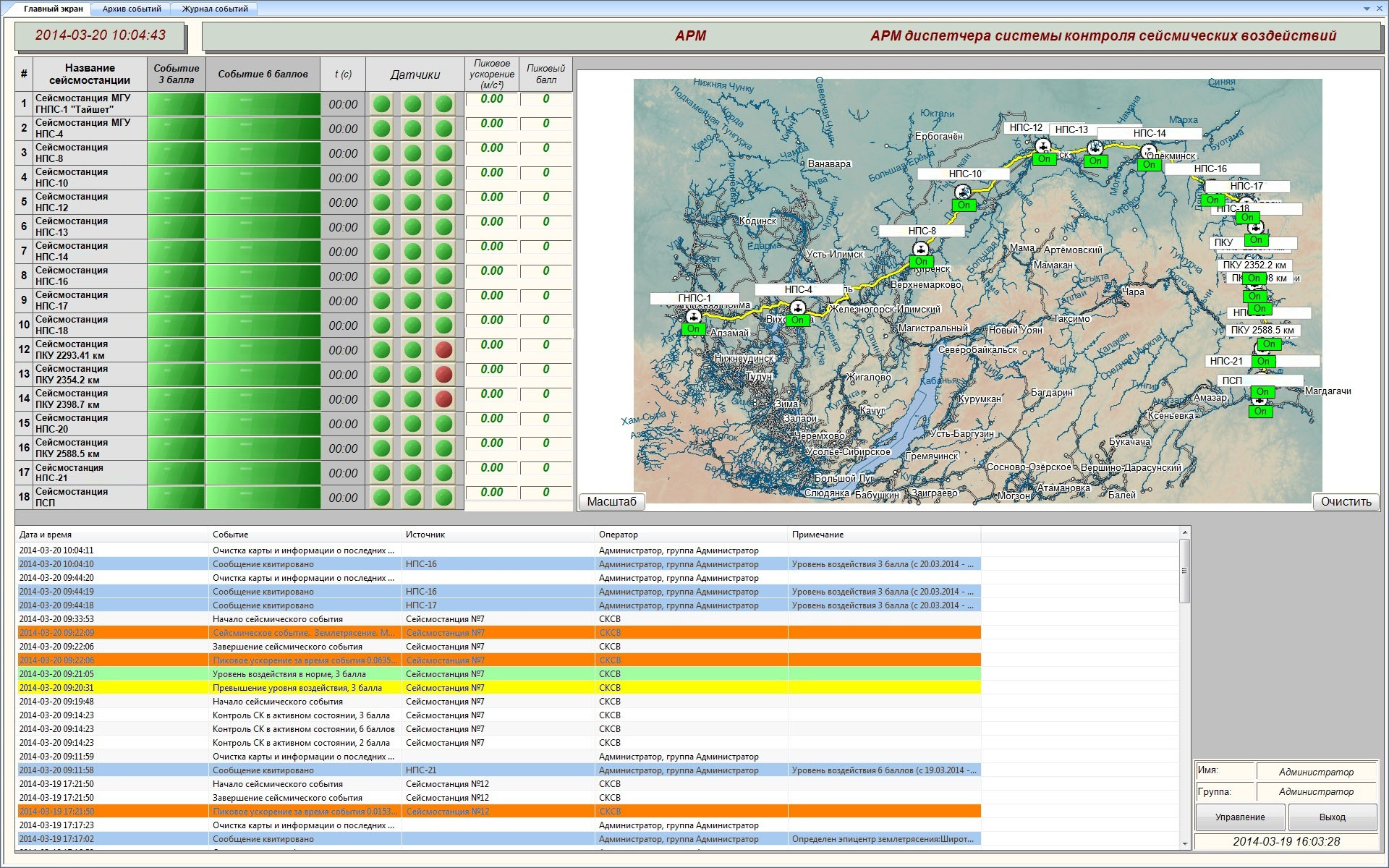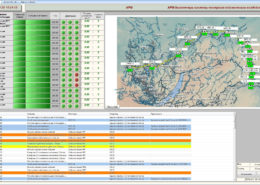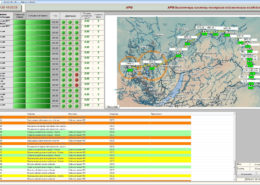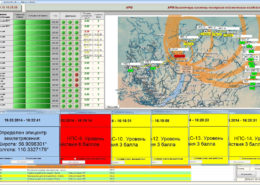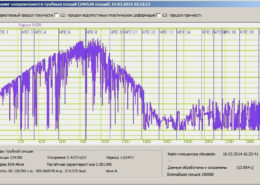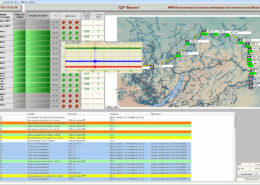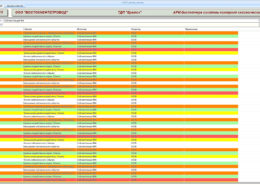SCADA-project
Seismic impact control system
The system is delivered together with the option “SCADA ZETView“.
SCADA-project “SICS” is delivered as an integral component of the Seismic impact control system.
POR (price on request)
The software part of the seismic impact control system is implemented as the graphical programming environment ZETVIEW. The system is represented by SCADA-project (the source code is displayed in the format of a mnemonic diagram) and executable file. The program operates as an OPC-server, which allows to establish connection between the SCADA-systems of the third parties and ZETVIEW OPC-server, and to retrieve the corresponding data.
The software part of the system includes 3 levels:
- seismic recorders,
- server,
- WKS.
The software of industrial PC-s included into the scope of the seismic stations allows to detect the seismic impacts and to classify them. In the case of an earthquake, the system evaluates the magnitude (by Richter scale) and the distance from the seismic recorder to the earthquake focus.
The data from the seismic recorders is further transferred to the server used for the evaluation of seismic conditions. In the case, if three or more seismic stations are used within the scope of the seismic impact control system, it becomes possible to determine coordinates of the earthquake focus. The server is used for data processing in real-time mode, archive storage of the data, and for transmission of the current seismic data to the SCADA-systems developed by third parties.
The work station allows to conduct real-time analysis of the seismic signals in the extended mode based on the previously recorded signals.
Functional range of the seismic impact control system
- Data recording in real-time mode with synchronization by Moscow time, primary processing and storage of the seismic data in the memory of the seismic recorder;
- In the case if the seismic impact exceeds the level of 6 on the MSK-64 scale, the system produces an alarm signal “Dangerous earthquake”, and sends “dry contact” signal to the linear telecontrol system;
- The alarm signal is produced in the case, if the seismic impact exceeds the intensity of 3 by MSK-64 scale, which allows to conduct comprehensive evaluation of the seismic station condition;
- Transmission of constant seismic data flow to the server of the system via special communication channels;
- Visual representation of the information received from the digital seismic recorder at the work station of SICS operator;
- The system enables storage of the seismic data (both at the level of the seismic recorder and SICS servers) for the period of at least one year.
Seismic recorder software: functions and parameters
1. Continuous recording and conversion of the vibration acceleration signals registered by the seismic recorders, recording of the source signals to the data storage module (data storage period: min. 90 days).
2. Digital LPF-s and HPF-s with unlimited pulse characteristic used for band-pass filtration of the source vibration acceleration signals.
3. Digital integrating filters of 1-st and 2-nd order used for generation of constant secondary vibration acceleration and displacement signals from the primary vibration acceleration signals.
4. Multi-parameter detection of seismic events in real-time mode based on digitized vibration acceleration signals (accelerograms), including filtration and integration of signals used for obtaining the intermediate vibration velocity and acceleration signals necessary for the subsequent evaluation of the seismic impact level.
5. Instruments used for generation and transmission of the “dry contact” signals with the use of TCP/IP protocol, OPC server, or via Modbus TCP protocol.
7. Evaluation of the seismic event parameters:
— time of the seismic event beginning at the epicentrum;
— time of compression (P) and secondary (S) waves arrival;
— seismic event magnitude;
— magnitude of the seismic event at the installation area of the seismic recorder;
— peak acceleration value for the entire duration of the seismic event;
— distance to the epicentrum of the seismic event;
— value of the prevailing oscillations period by axes X, Y, and Z for the entire duration of the seismic event;
— maximal value of the vibration acceleration amplitude by axes X, Y, and Z for the entire duration of the seismic event.
8. Generation of alarm and warning notifications by closed TCP/IP protocol and their further transmission to OPC-server or via Modbus TCP protocol.
9. Operation in the role of ОРС-client.
10. Constant monitoring of the seismic detectors and self-diagnostics of the modules included into the scope of the early detection systems.
11. Possibility of adding additional transducers to the system: inductive velocimeters, laser displacement transducers, and further analysis of the accumulated data.
12. Automated loading of the software as the power supply is normalized.
13. Protection of metrologically significant part of the software from unauthorized or accidental configuration with the use of MD5 hash function.
Functions of the server
1. Receipt of continuous seismic data flow from the seismic recorders by closed TCP/IP protocol.
2. Transmission of continuous seismic data flow from the seismic recorders by closed TCP/IP protocol.
3. Long-term archive storage of primary seismic data received from the seismic station, and storage of processed data.
4. Operation in the capacity of ОРС-server.
5. Operation in the capacity of ОРС-client.
6. Submission of the information concerning primary seismic data from the data archive located on the server upon request of the user.
Functions of the WKS
1. Receipt of continuous seismic data flow from the server via closed TCP/IP protocol.
2. Operation in the capacity of ОРС-client.
3. Visual representation of the seismic graphs in real-time mode from the selected transducer of the seismic station.
4. Viewing of the historical events and the source acceleration signals for the set time interval for each of the seismic transducers.
5. Viewing of trends for long-term time intervals (day, month, year) for evaluation of dynamics and development trends of the process by all the signals or based on the selected signals.
6. Generation of notifications with light or sound signals for the personnel in the case if the set levels of the seismic impact thresholds are exceeded.
7. Displaying of measured and calculated parameters of the seismic event with georeferencing.
8. Calculation and visual representation of the stress-strain condition of the controlled object. In the case of seismic event occurrence, the data relating to the seismic event and the relevant visual image are saved to the archive.
Data protection notification
Please note that the personal data provided by you is used exclusively for the purposes of fulfilling our contractual obligations, including, but not limited to: issuing invoices, delivery documents, documentation relating to customs clearance process, etc. We do not provide your personal data to any third party except for the purposes relating to our direct contractual obligations. Upon completion of order processing and expiry of the warranty period for the Products provided by our Company, we do not store or process any of your personal data. Please note, that our Company’s Confidential policy does not imply any advertising or marketing activities with the use of your personal data (including your Company name, address, your E-mail, phone number and other information provided by you with a view to placing an Order and organization of the Delivery).

